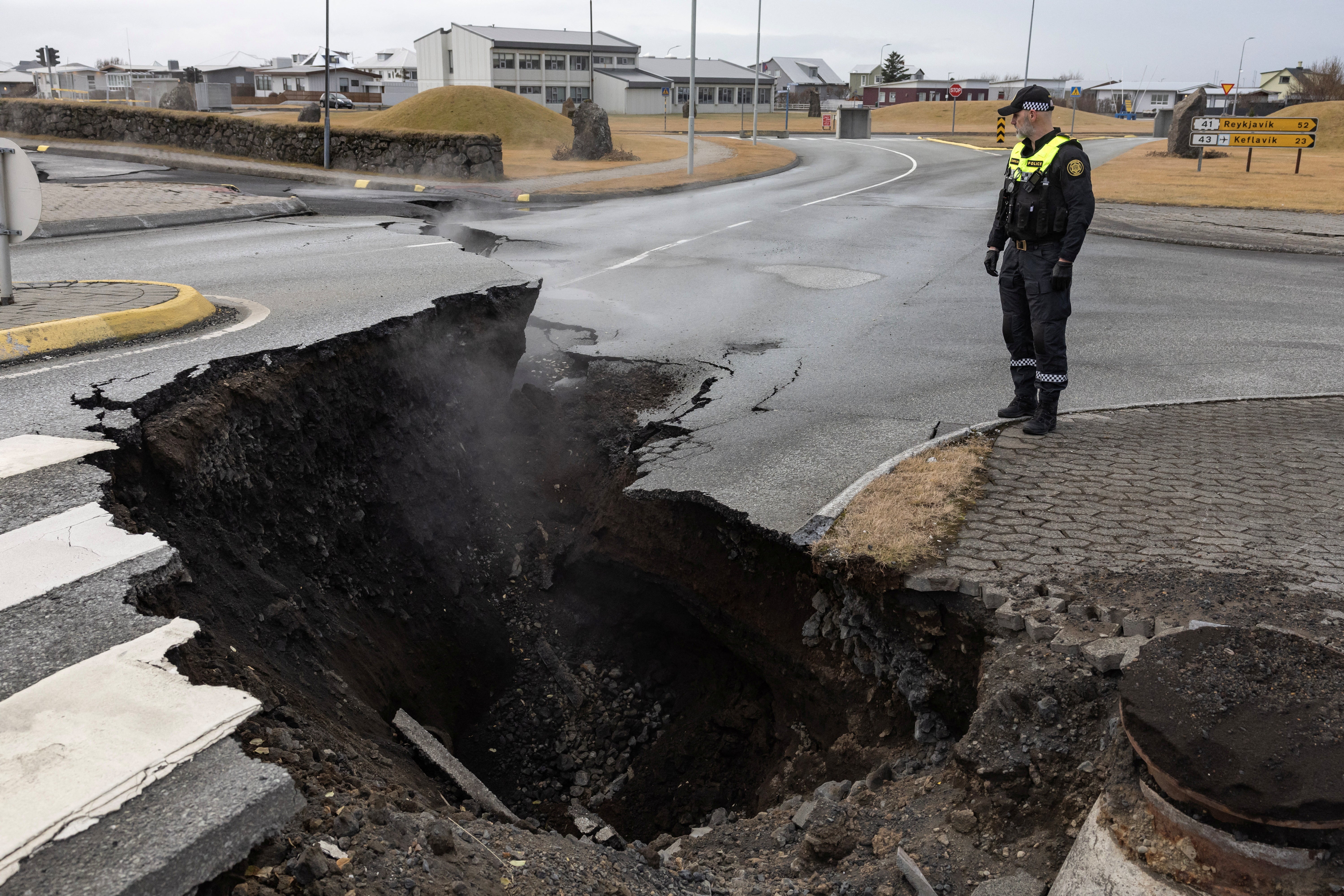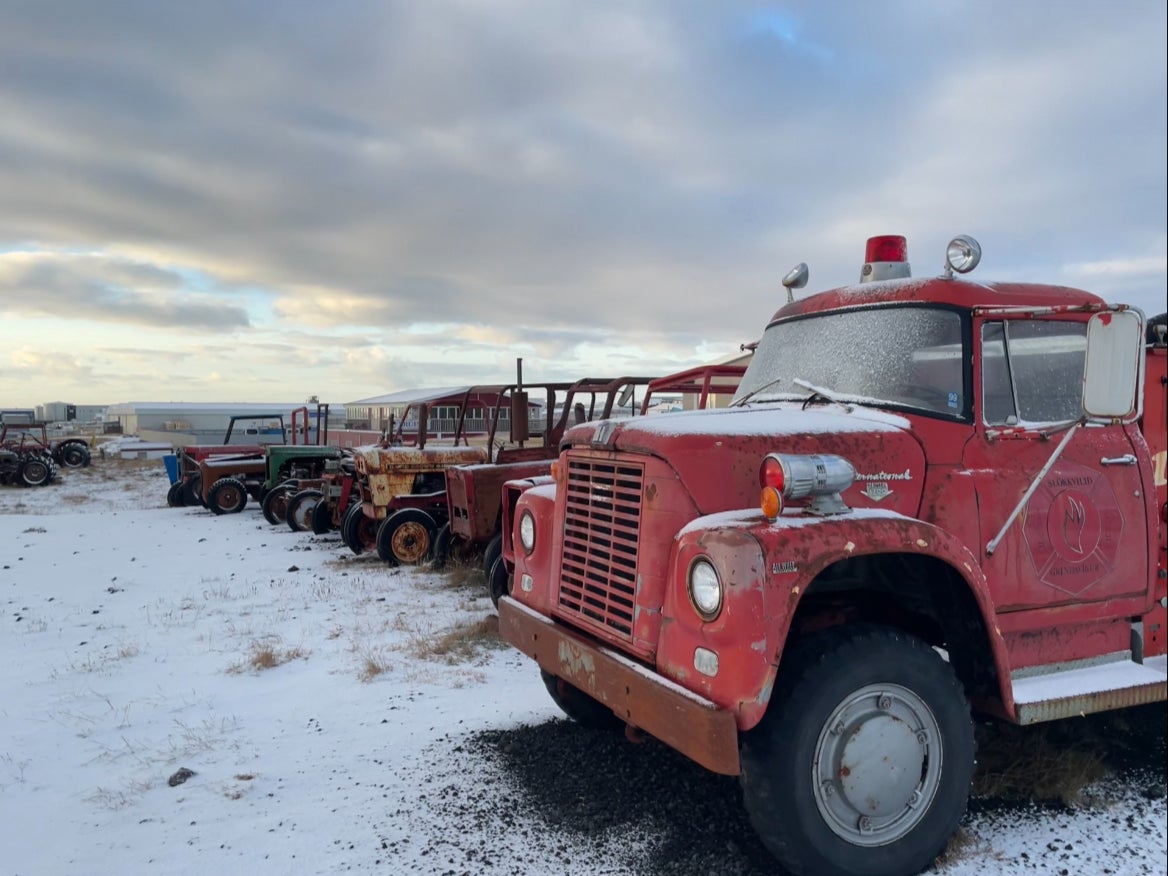What to do with Grindavík: Has Iceland’s #1 selfie spot just emerged out of the ground?
Iceland’s hottest tourist destination since Reykjavík’s Phallological Museum may have shown itself in Grindavík, writes Barney Davis

Your support helps us to tell the story
From reproductive rights to climate change to Big Tech, The Independent is on the ground when the story is developing. Whether it's investigating the financials of Elon Musk's pro-Trump PAC or producing our latest documentary, 'The A Word', which shines a light on the American women fighting for reproductive rights, we know how important it is to parse out the facts from the messaging.
At such a critical moment in US history, we need reporters on the ground. Your donation allows us to keep sending journalists to speak to both sides of the story.
The Independent is trusted by Americans across the entire political spectrum. And unlike many other quality news outlets, we choose not to lock Americans out of our reporting and analysis with paywalls. We believe quality journalism should be available to everyone, paid for by those who can afford it.
Your support makes all the difference.From the spectacular Northern Lights to the stunning waters of Blue Lagoon, Iceland is certainly not short of tourist attractions.
But the country may have found another spot for tourists to take selfies in front of, after the small harbour town of Grindavík was hit by thousands of earthquakes.
As fears of an imminent volcanic eruption subside, the town is looking at how best to recover after streets were torn up and residents fled for safety.
The crater left behind in the wake of the chaos spreads from a Lutheran church and nursery all the way through a children’s playground and underneath the fabled Grindavík basketball team’s plush new stadium with the season about to start.
At different sections, you can simply skip from the Eurasian to the North American tectonic plate but at its deepest points you will struggle to see the bottom of the dark abyss.

The Independent observed rescue workers taking a break from inspecting crumbling houses and helping residents drag out their washing machines to pose for photos by the crack.
On Thursday morning, the residents were finally given unrestricted access to return and collect jetskis, cuddly toys and other valuables.
But despite the government’s announcement that it would be open until sunset, only a couple of hundred returned. Others stayed well clear, possibly still nervous about a potential eruption.

But with a “mere’’ 200 earthquakes overnight, harbour life showed signs of getting back to normal.
With the likelihood of a sudden eruption decreasing daily and the world’s media scrambling to other locations, the question becomes, what is next for Grindavík?
An enormous crater could be just the thing to attract crowds, according to Snorri Valsson, Iceland’s spokesperson for tourism, who led the first tour of Grindavík for the world’s media during a blistering hailstorm.

He told The Independent: “Grindavík is the quintessential fishing town that has been Iceland’s backbone throughout the centuries. It has an excellent museum already on the tradition of salted fish making, for example.
“But I see an increase in tourists coming certainly since the earthquake because the infrastructure will be repaired and there’s a history of the events of recent days.
“I could imagine it could be a focus point of the visitor’s centre for years to come because of these events and the effect it had on town life. For Iceland’s economy, it is extremely important Grindavík gets back to normal. It has impacted the decisions of the central bank already.”

On what to do with the gaping chasm in town, he said: “When we have destruction from the eruption in the Westman Islands 50 years ago they kept some of the ruins intact.
“So most of the damages were repaired but there were sights in town where you could see the actual destruction, houses half covered under lava and ash. So I can imagine they will keep a couple of sights where you could see the actual crack in the ground if it is feasible. It will become an outdoor example, fascinating to see.
“It has done some damage but I’m sure the people of Grindavík can bring something positive out of it.
“The people have shown incredible resilience. You can see that it has had an effect on them. It’s a tight-knit community that’s going to stick together and get back on their feet again.
“As you can see, travel in there is safe so everyone is welcome.”

Mr Valsson’s optimism seems at odds with the thoughts of Iceland’s most experienced seismologist, Professor Páll Einarsson, who was brought out of retirement to study the thousands of earthquakes rocking the town.
At one point he rushes over to his monitor assessing vibrations on the highly sensitive fibre optic cable laid along the fault line only to find out it was just a passing car.
Prof Einarsson says he would be happy to move back to Grindavík himself but the situation is still far too unstable to move his family, let alone the entire population of the town.

He told The Independent that it depended on the behaviour of the dyke – a flat body of rock that cuts through another – under Grindavík. He said: “This dyke looks like it could solidify underground and not make it to the surface and that is the most favourable option for the people living there.
“But the worst-case scenario is the magma-filled crack reaches the surface in the middle of the town between the houses of Grindavík. If that eruption continues for the same time, it will be wiped out.
“We have to keep in mind this is not just one dyke that is scaring people right now, it is a new chapter of a long story. We’ve had three eruptions already – this story is not going to end with this dyke.
“The decision to move back is going to be a very difficult one and I don’t want to make it. Every day now brings a new situation. The last eruption was 1214 – since then none until 2021, which is 800 years of slumber.
“We may now be at the beginning of an active volcanic period for the next two or three centuries.”

Back at the crack, one volunteer rescue worker said: “I think it will definitely become the number one selfie spot in Iceland.
“If you put up a fish and chip store right there it will do so well. The English will love it there. It is an amazing thing that nobody was injured.
“Everyone is doing differently, some people are really angry, others are really happy their homes aren’t damaged.”

Margaret Eyjolfsdottir, 55, walked her normally skittish whippet, Lady, on their normal route seemed reassured in the setting sun, declaring emphatically: “We are going nowhere, this is our home. I wanted to go over and see the damage but they wouldn’t let me near.
“I think she [points to Lady] understands that it is all over. She is calm and so am I.”
Erling Snær, 20, was collecting the last of his things, with his younger sister grabbing a huge bunny rabbit from their living room that now sinks downwards into the yawning chasm.

“The earthquakes went on for hours getting worse and worse, the church bells were ringing so loudly it was like a warning from God,” he says.
“We’ve had a lot of news in this town but I hope this time people are looking into it, and will make changes because it is so hard to leave your home.
“It’s hard to think about tourists coming to look at the crack today. But for now I don’t think they will. It’s all so soon. I still believe that something will erupt.”
Join our commenting forum
Join thought-provoking conversations, follow other Independent readers and see their replies
Comments